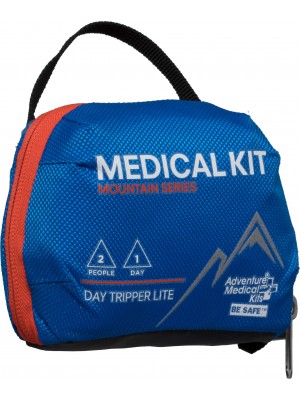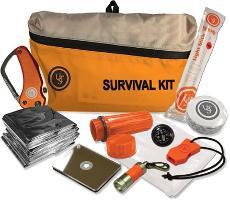Before heading out on an outdoor adventure with friends or family, it’s important to obtain a good first aid kit (FAK)—and know how to use it! When it comes to finding the perfect FAK, there are two ways to go about it: purchase a pre-designed kit available at most outdoor stores, or create one from scratch.
 Either way, there are some important questions to ask. Be sure to consider the following:
Either way, there are some important questions to ask. Be sure to consider the following:
- How many people are going on your adventure? Small first aid kits are usually designed for only one to three people. For groups larger than that, simply add more supplies to account for the increase in numbers. Most companies who offer pre-designed kits will have options for small-, medium-, or large-sized groups, with an adequate number of items in each respective kit.
- How long is your adventure? The same concept above applies here. Most small first aid kits are intended for just a day or two outing; be sure to think through the length of the trip, and how far away from the nearest medical facility the trailhead is, and have enough supplies to cover that length of time, plus a little extra.
- What activities are included? Different activities have different needs, so it’s important to consider what the trip entails. For instance, if the trip is mostly on the water, a waterproof kit is a necessity. If the trip is a mountain biking excursion, more supplies to treat cuts and scrapes, as well as triangle bandages to immobilize potential shoulder injuries, are a good investment.
- What is the leader’s highest level of first aid training? There should be someone on the trip who knows how to use each item in the first aid kit. A comprehensive kit is good to have, but if no one knows how to use something, it won’t be of much use.

Now that the above questions have been considered, it’s time to begin the hunt for the perfect first aid kit. Regardless of whether purchasing a pre-designed kit or creating one from scratch, here are some essential items to include:
- Waterproof container to hold everything (stuff sacks work great for this)
- Several pairs of gloves (made from Nitrile, as many people are allergic to latex)
- CPR mask/breathing barrier
- Blunt-tip scissors
- Tweezers
- Pen/pencil and paper
- 30 cc syringe for wound-cleaning
- Triangle/cravat bandages and safety pins
- Variety of sizes of adhesive bandages
- Variety of sizes of gauze pads/dressings
- Athletic tape
- Adherent gauze or vet wrap
- Compression wrap or Ace elastic bandage
- Moleskin or another blister treatment
- Alcohol/antiseptic wipes
- Antibiotic ointment (small individual packets, not a giant tube), ex: Bacitracin or triple antibiotic ointment
- Ibuprofen (anti-inflammatory)
- Acetaminophen (pain reliever and fever reducer)
- Diphenhydramine (antihistamine)
- Hydrocortisone cream
- Antacids
- Loperamide (anti-diarrheal)
- Glucose tablets